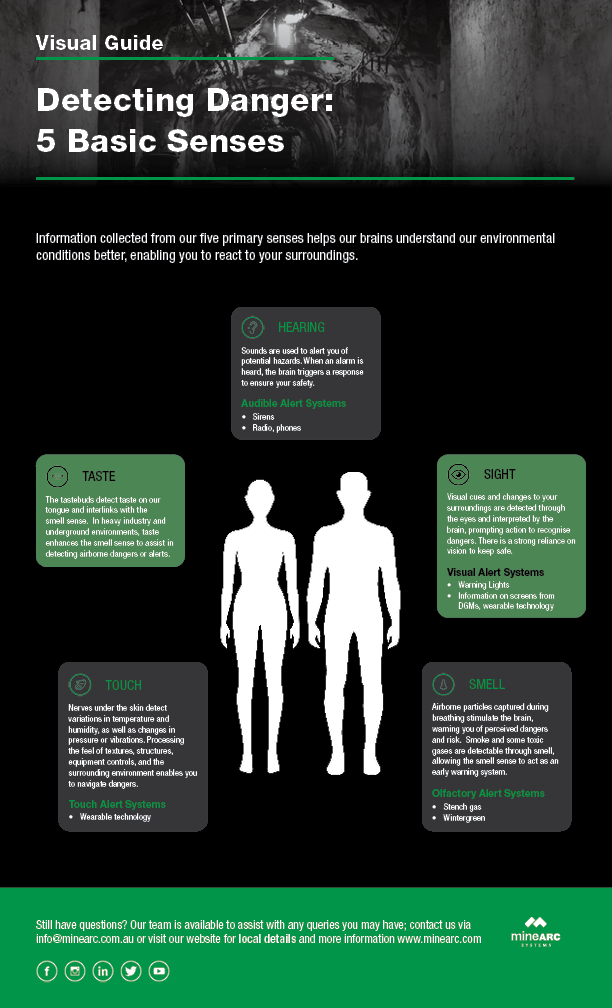Information collected from our five primary senses helps detect danger and allows our brains to understand our environmental conditions better, enabling us to react to our surroundings.
We absorb information through sight, hearing, touch, smell and taste, which is quickly relayed and interpreted to our brains to provoke a reaction. In underground mines and tunnels or industrial environments, your senses play a vital role in keeping you safe.
Detecting Danger Using Your Senses
How Your Senses Keep You Safe
| Sense | How Your Senses Detect Danger | Alert Systems |
| Sight | Visual cues and changes to your surroundings are detected through the eyes and interpreted by the brain, prompting action to recognise dangers. There is a strong reliance on vision to keep safe. | Warning lights, information on screens from DGMs, wearable technology, remote monitoring programs |
| Hearing | Sounds are used to alert you of potential hazards. When an alarm is heard, the brain triggers a response to ensure your safety. | Sirens, phones, radio |
| Touch | Nerves under the skin detect variations in temperature and humidity, as well as changes in pressure or vibrations. Processing the feel of textures, structures, equipment controls, and the surrounding environment enables you to navigate dangers. | Wearable technology |
| Smell | Airborne particles captured during breathing stimulate the brain, warning you of perceived dangers and risk. Smoke and some toxic gases are detectable through smell, allowing the smell sense to act as an early warning system. | Stench Gas, wintergreen |
| Taste | The tastebuds detect taste on our tongue and interlinks with the smell sense. In heavy industry and underground environments, taste enhances the smell sense to assist in detecting airborne dangers or alerts. |







